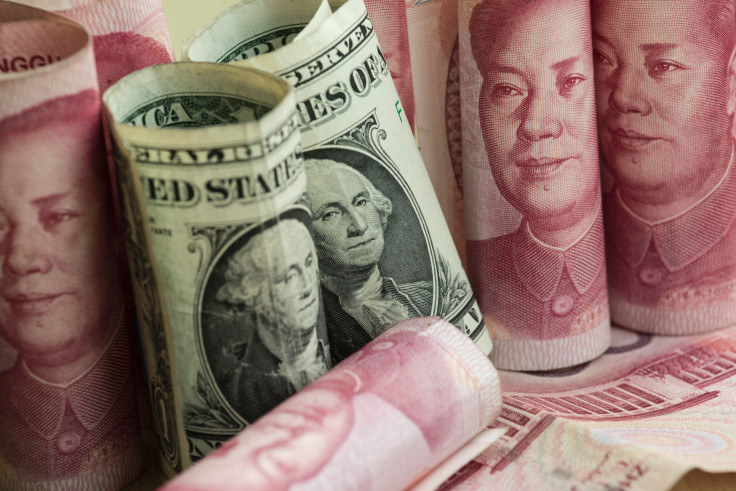China Yuan To USD: Midpoint Weaker Than 7 Per Dollar For Third-Straight Session

China on Monday again kept the midpoint trading rate of the yuan slightly above RMB7.00 to $1.00, just large enough to prop-up its sagging export sector but just small enough not to trigger further monetary and fiscal retaliation from the Trump administration.
The People’s Bank of China (PBOC) set the official midpoint reference at RMB7.0211 to $1.00 on Monday. This exchange rate was weaker than Friday’s session when the yuan stood at RMB 7.0136 against the dollar but stronger than what than the RMB7.0331 to $1.00 predicted by analysts.
The yuan midpoint was pegged at RMB7.0039 to $1.00 on Thursday (Aug. 8), the weakest level since April 21, 2008. Monday is the third straight day where the PBOC set the yuan midpoint at a level weaker than the important RMB7.00 to $1.00 level.
PBOC effectively devalued the yuan on Aug. 5 when it allowed it to sink to RMB6.9225 to S1.00 before markets opened. This was the yuan’s weakest level since Dec. 3, 2018 and led to a market panic and selloff that pushed Wall Street to its worst percentage declines this year.
PBOC allows the yuan to fluctuate up to 2% higher or lower than the daily midpoint level to manage volatility.
Some analysts claim the continuing weakening of the yuan vis-à-vis the U.S. dollar is again an attempt by China to boost exports in support of an economy that grew at its slowest rate in 25 years during the first quarter of this year.
A devalued yuan makes China’s exports cheaper and, therefore, more competitive against goods from other countries entering the U.S. On the other hand, it also makes China’s imports more expensive, adding impetus to its ongoing import substitution campaign.
The yuan has weakened for four straight days and investors worry about the currency weakening even further next week. A number of analysts believe China’s devaluation of the yuan Monday might have triggered a currency war that will stand to worsen trade tensions with the Trump administration.
Intriguingly, China seems to have signaled its intent to not fight in a currency war against the U.S. by setting the midpoint or reference rate of the yuan at a tolerable RMB6.9996 to $1.00 on Wednesday.
Wall Street seemed to appreciate statements by PBOC governor Yi Gang, who said China won’t use the yuan as a tool to cope with external disturbances such as trade disputes. Yi also said the yuan exchange rate is now at an appropriate level.
He said the exchange rate is in line with China’s economic fundamentals and market demand and supply. PBOC has denied it is devaluing the yuan to counter Trump’s tariffs.
PBOC followed-up Yi’s statements by setting the official midpoint reference for the yuan at RMB6.9996 Monday morning. The Trump administration then labeled China a currency manipulator Monday afternoon.
China will prevent any rapid depreciation of the yuan since “substantial devaluation would drive capital outflows and create one-way bets in the market on further depreciation, as seen in 2015 and 2016,” believes Eurasia Group.
Instead, PBOC will use messaging and intervention to keep the pace of depreciation against the dollar gradual.
“The bank will also be careful not to allow the (yuan) to depreciate on a sustained basis against a broader basket of currencies.”
© Copyright IBTimes 2024. All rights reserved.





















